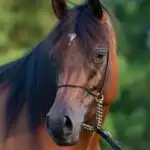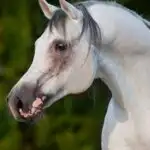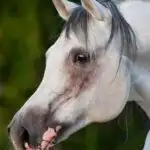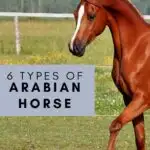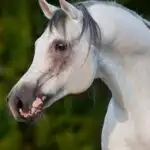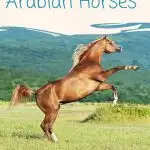When the Arabian horse is talked about, it is generally without much further breed specificity. Gorgeous, elegant necks; long, strong legs; high, flowing tails – all the physical niceties that go along with the breed’s aesthetics. But though you may say “Arabian” to describe the full spectrum, did you know there is actually more than one type?
There are actually a number of specific sub-types of the purebred Arabian horse: the Egyptian, the Spanish, the Polish, the Russin, the Shagya, the Crabbet.
Though similar – and though all Arabians – they do sport some differences in looks and personality (as well as in history) that set them apart from each other.
Table of Contents
Straight Egyptian
The Egyptian Arabian is a lineage of unbroken pureblood status. Much like registered and recognized Thoroughbreds, Egyptian Arabians can trace their bloodlines all the way back to the herds of horses once owned by Viceroy Mohammed Ali – and his grandson Abbas Pasha I – in Egypt itself.
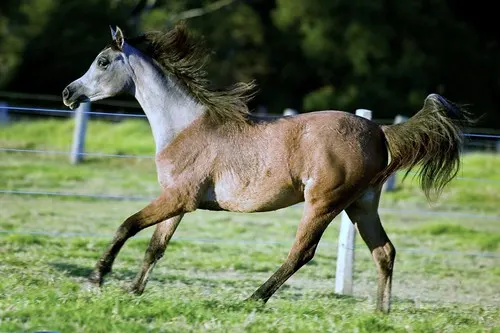
Since the years have introduced wider gene pools, Arabians have been breed interchangeably so that most bloodlines are mixed. That is where the Straight Egyptian Arabian differs – it is of pure, unmixed desert heritage. In fact, it is the only type of Arabian to be so.
Though bred and exported for many years, in 1952, an official designation was brought into being and a catalog was begun to trace the pedigree of each Arabian to their desert heritage.
While many breeders saw the value in mixed breeding (and giving way to the more genetically diverse breeds named based upon country of foaling: Spanish, Russian and Polish), the Egyptian purists sought to preserve the purity of this line.
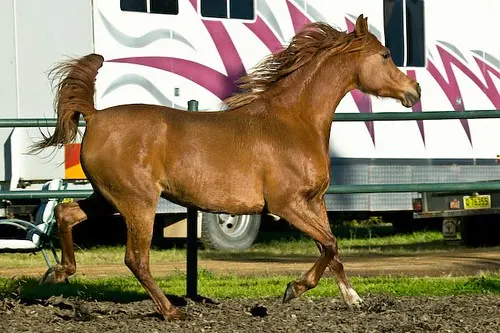
Egyptian Arabians can come in a variety of solid colors, and they are also able to be found with rabicano roan coats.
The Egyptian Arabian is smaller of stature, generally falling within the range of 14.2 to 15.2 hands, and possess what many consider to be the most beautiful features, ads part of their selective breeding was for looks.
Elegant bones, a very dished face, and a tail carried extra high set apart this type of Arabian, which makes up only around 2% of the breed as a whole.
Spanish Arabian
Arabians are often closely associated with their cousins, the Lipizzaner horses, so it would follow that there is an Arabian type synonymous with Spain.
Even rare than the Egyptian Arabian, though, the Spanish Arabian has a population so small, it is less than .1% of the Arabian breed makeup!
Spanish horses are less diverse in color than their pureblood Egyptian cousins, and are primarily found in the colors of white and gray that most of us are familiar with.
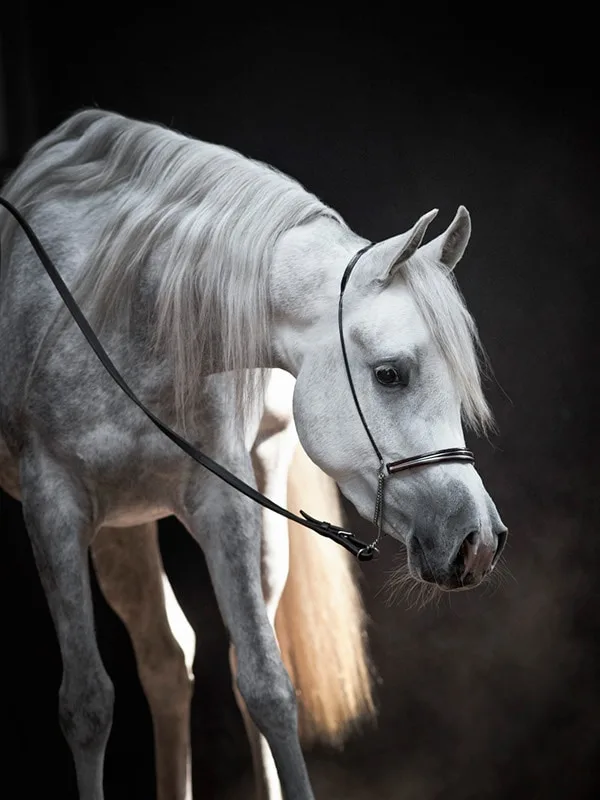
They were bred to be a smooth ride, meaning they are ideal not only for fast runs but especially for longer endurance rides. In fact, the warriors of the Iberian Peninsula needed a horse that was willing to listen while also being very agile and suited to raid warfare.
Thus, the Spanish Arabian was born. Their disposition is calmer than that of the higher strung Egyptian Arabian and, though their faces are both dishy, the Spanish Arabian has a tail that is more curved than straight and high.
Though more genetically diverse than the Straight Egyptian, the Spanish Arabian still has a rather limited gene pool, with no outside blood being introduced in the past 100 years. Because of this, their numbers are smaller.
Polish Arabian – Seglawi & Kuhailan
A breed of Arabian long tied in with warfare, the Polish Arabian has a storied history. First introduced to Poland in the 16th Century by the Turks, these Arabians were seized by the local people as spoils of war.
Then, by World War I, the population had been devastated to less than 25 horses. From there, in the 1920s, the Arabian Horse Breeding Society was formed in Poland and a breeding program begun in earnest.
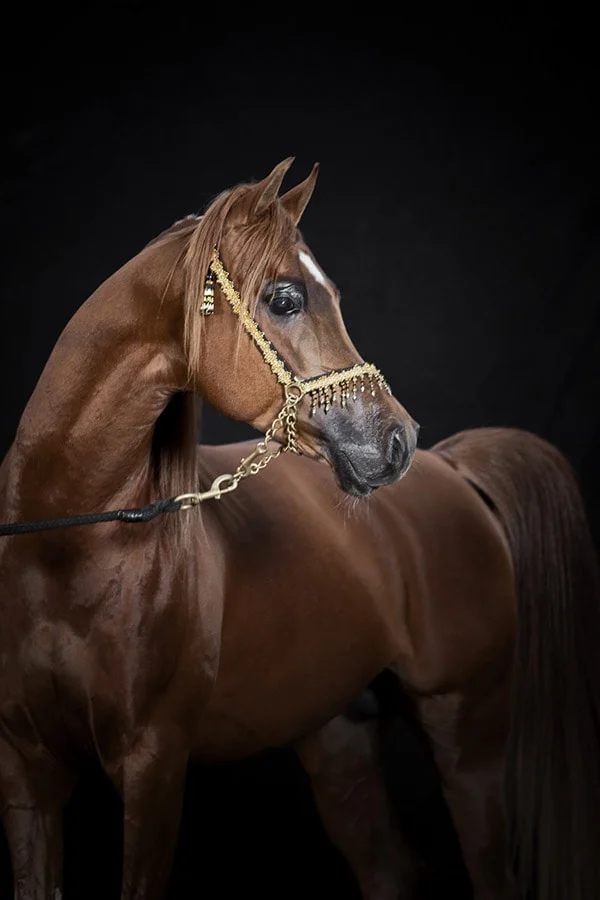
Based on broodmares, each horse has a lineage that can be traced back at least 100 years in Poland. There are also two general types of Polish Arabians: the Seglawi, known for their refined looks and exceptional beauty, and the Kuhialan, praised for their natural athletic ability and more athletic builds.
The Seglawi are most often that Arabian-recognized light gray, while the tougher Kuhailans are most times born with bay coats.
Physical traits that both types of Polish Arabians share in rarely vary. In terms of size, these horses are small and very muscular with long withers.
Their tail follows the Arabian tradition of being held high, and so, too, does the neck match: long, graceful and arched. Polish Arabians are also intelligent and willing to please, and, as such, are a very popular choice for many riders.
A lot of the Arabians in the United States are of the Segwali breed of Polish Arabians.
Crabbet Arabian
Crabbet refers to a particular breeding farm in England which was the foundational location for the English strain of Arabians. The English nobility fell in love with the Arabian horses seen abroad. They were determined to bring several back to England to breed them there.
Obsessed with creating a lineage of “super horses”, these Arabians were bred for size, resulting in the tallest horses of all the Arabians.
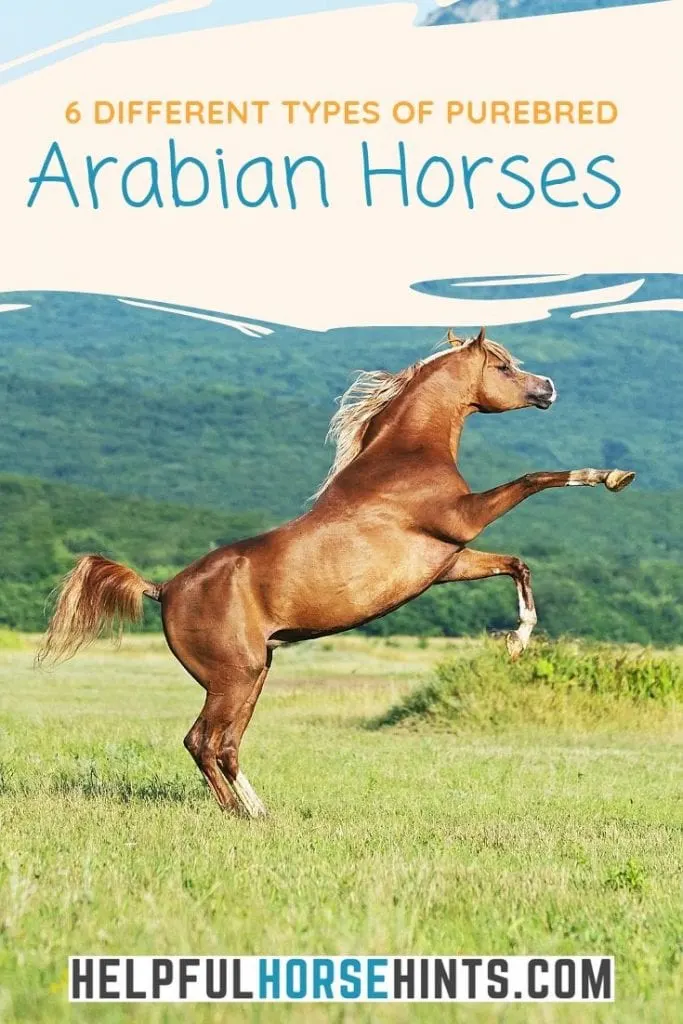
Their breeding also prioritized soundness and a sturdy confirmation over looks, and so they can lack some of the more exaggerated elegant features that are today considered hallmarks of the Arabian breed.
This focus, though, makes them excellent riding horses and very well suited for long distances, as they are not prone to foundering or breakdowns of any kind. Because of this lack of preference for aesthetics, Crabbet Arabians can boast any number of solid coat colorings.
Today, most Arabian bloodlines can be traced to having some Crabbet sire influence. A natural athlete, the Crabbet Arabian is sound, a good mover, athletic and possessing a solid temperament, making them highly sought after for under saddle competition.
The endurance riding field, already heavily dominated by Arabian, is particularly suited to the Crabbet Arabians, as well as dressage and show jumping.
Russian Arabian
Eastern Europe was not immune to Arabian appreciation and when they were first introduced to these gorgeous horses, a new breed took place.
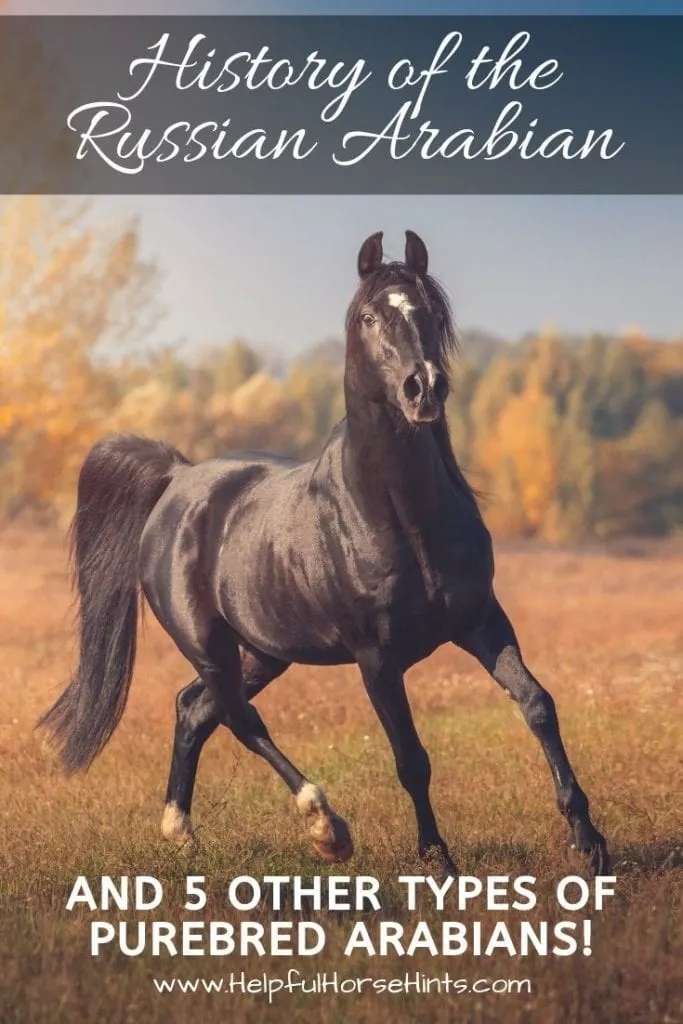
In the 17th century, Czars and nobility drove the Arabian frenzy and started a breeding program that would create the Russian Arabian.
In order to perfect their horse and allow for genetic diversity, they bred from many bloodlines, including Polish and Crabbet.
The Russian Arabian stands an average of 15 hands tall and are primarily shades of brown. Because of their diversity, they are considered to be healthy and personable and are widely loved by horse owners.
Because of their incredible stamina, too, they found work throughout history are war horses and, later, racehorses. Their temperament is so calm, though, that nowadays they are considered to be the perfect family horse.
Shagya Arabian
A more blended breed of Arabian, the Shagya has been historically bred to take the very best qualities of traditional desert Arabians – their natural toughness and low maintenance tempered with their grace, elegance, and friendliness – and mix them with the best in modern riding horses.
From this, the Shagya Arabian is blessed with a tall, strong build and a fluid movement, well suited for running, as well as for jumping.
Their origins begin over 200 years ago in the Austro-Hungarian Empire. Arabians were well-prized there for their intelligence and personalities, but there was a need for a larger and stronger horse, one that could carry more as well as pull carts and carriages. Thus, the Shagya was selectively bred for.
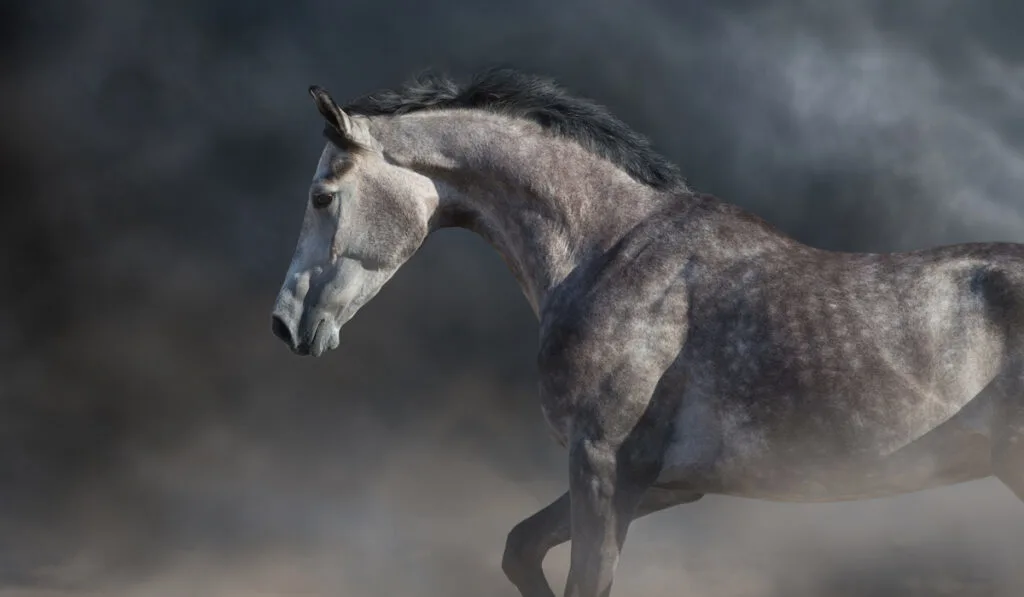
Though they are found in many solids, gray is the most common coat color. They are a bit taller than some other Arabians, standing usually between 15 and 16 hands. Shagya Arabians have strong legs, good toplines and dishy faces that are quite expressive.
There are so many distinct sub-breeds of Arabian, but a few things remain constant: their elegance, their dishy face, their intelligence, and their spirit. Next time you see someone riding an Arabian, you’ll hopefully be better able to guess what type of Arabian it is!
Related Posts
Resources:
- https://www.thecarolinasequestrian.com/special-features/meet-the-breed/76-meet-the-egyptian-arabian
- http://www.arabianessence.com/arabian_horses-russian.php
- http://www.shagya.net/shagya-arabian-breed.html

